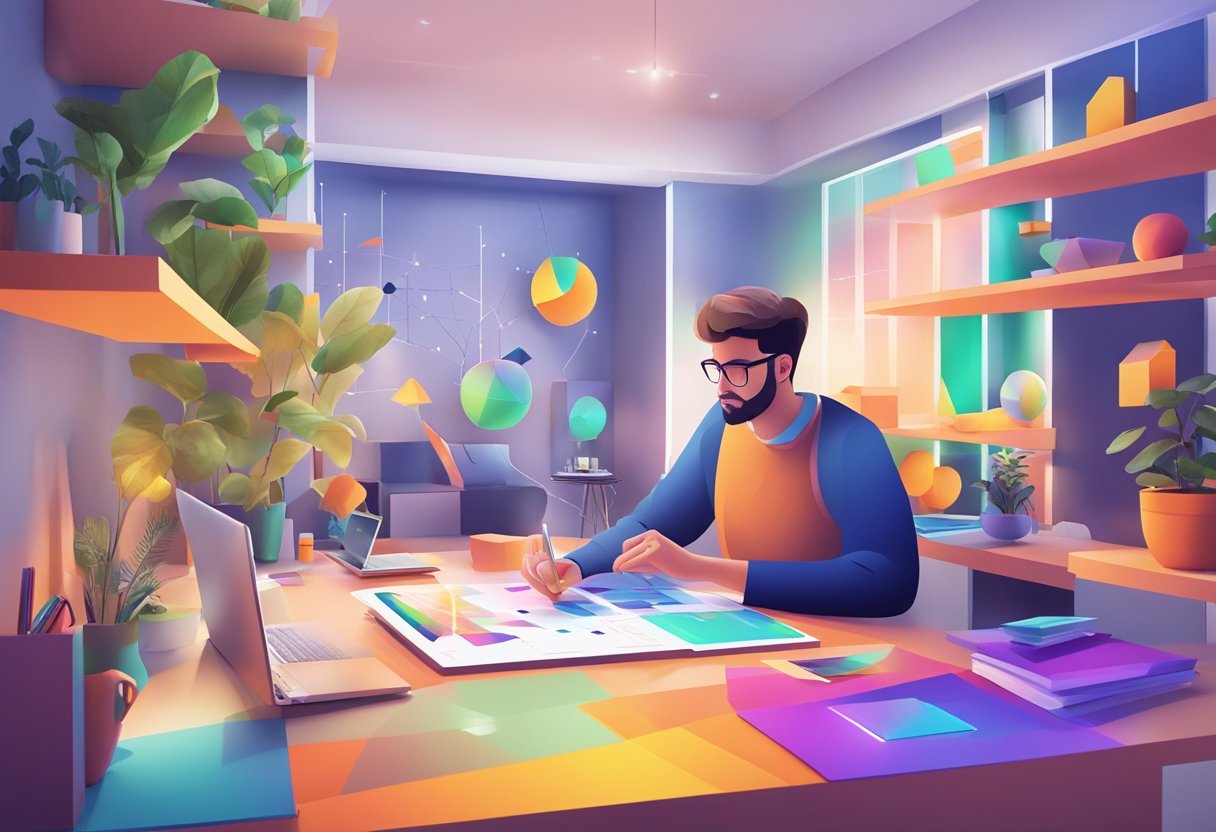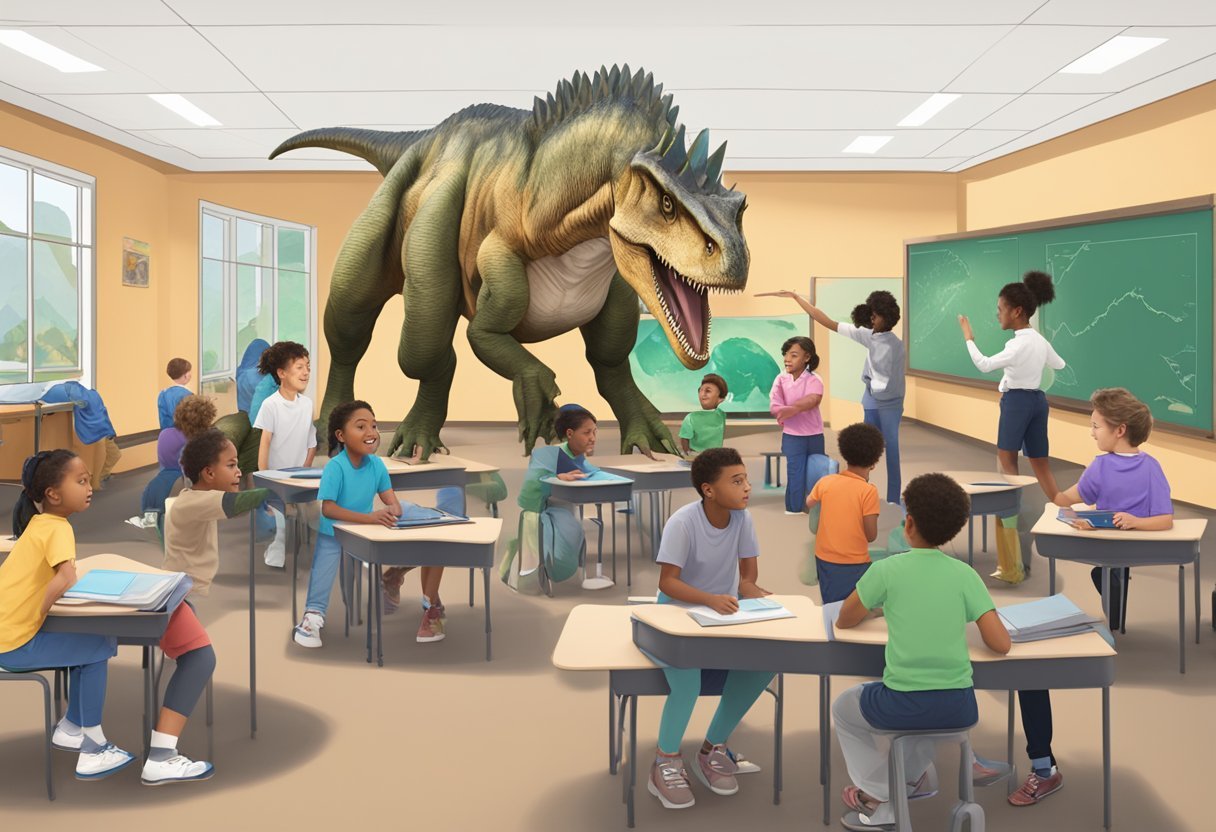Augmented Reality (AR) is an exciting technology that is rapidly gaining popularity among developers and users alike. AR projects are becoming increasingly common in various domains, including gaming, education, healthcare, and retail. AR technology allows developers to create immersive experiences that blend the real and virtual worlds, providing users with unique and engaging interactions. In this article, I will share with you 10 of the biggest AR projects and their primary focus.
To develop AR projects, you need to have a good understanding of the fundamentals of AR technology, including marker-based and markerless tracking, 3D modeling, and rendering. You also need to have a solid grasp of programming languages such as C#, C++, and Java, as well as AR development frameworks like Unity and Vuforia. Developing AR projects requires creativity and innovation, as well as a deep understanding of user experience design.
What is an AR project?
An AR project is an interactive experience that overlays digital content onto the real world. This technology allows users to interact with virtual objects in a real-world environment. AR projects can be used for various purposes, such as education, entertainment, marketing, and training.
Difference between AR and Virtual Reality projects
AR and VR projects are both immersive technologies, but they differ in the way they interact with the real world. AR projects overlay digital content onto the real world, while VR projects are entirely virtual environments. AR projects are more accessible and affordable than VR projects, as they only require a smartphone or tablet to experience.
Key AR Platforms and Tools
There are several key AR platforms and tools available for creating AR projects. Some of the most popular platforms include Unity, ARCore, ARKit, and WebAR. Unity is a cross-platform game engine that allows developers to create AR experiences for multiple platforms, including iOS and Android. ARCore and ARKit are AR development kits for Android and iOS devices, respectively. WebAR is a web-based AR platform that allows users to access AR experiences directly from their web browser.
To create an AR project, you will need to have a basic understanding of programming languages such as C# and JavaScript. You will also need to have experience with 3D modeling and animation software such as Blender and Maya. You will need to have a device that supports AR technology, such as a smartphone or tablet.
AR technology is an exciting and rapidly evolving field that offers endless possibilities for creating interactive and engaging experiences. With the right tools and skills, you can create your own AR projects and explore the potential of this emerging technology.
10 Biggest AR Projects

- Pokémon Go
- IKEA Place
- Snapchat Lenses
- Microsoft HoloLens
- Google ARCore
- Magic Leap One
- ARKit by Apple
- AccuVein
- Tilt Brush by Google
- BMW i Visualizer
Pokémon Go
Pokémon Go is a groundbreaking augmented reality project developed by Niantic, Inc. that took the world by storm upon its release in 2016. It utilizes a smartphone’s GPS to locate, capture, battle, and train virtual creatures, called Pokémon, which appear as if they are in the player’s real-world location.
The game encourages players to travel and explore their real-world surroundings to find and catch different species of Pokémon. This innovative use of AR technology has not only popularized AR gaming but has also had an impact on the gaming industry, leading to increased interest in location-based and AR technologies. Pokémon Go’s success demonstrates the potential of AR to create engaging, interactive experiences that blend the digital and physical worlds.
IKEA Place
IKEA Place is an AR application launched by the Swedish furniture giant IKEA that allows customers to visualize furniture in their own space before buying. Users can select from IKEA’s catalog and use their smartphone or tablet to place true-to-scale 3D models of furniture in their rooms.
This helps in making more informed decisions about furniture purchases and reduces the likelihood of returns due to size or style mismatches. IKEA Place exemplifies how AR can be utilized in retail to enhance customer experience and streamline the shopping process.
Snapchat Lenses
Snapchat Lenses are AR features that Snapchat users can apply to their photos and videos, altering their appearance or the world around them in real-time. These lenses can add special effects, transform faces, or introduce animated elements into the frame. The technology behind Snapchat Lenses, which involves facial recognition and tracking, has significantly impacted social media interaction by making AR accessible and fun for a broad audience. This project has not only been a driver for user engagement on the Snapchat platform but has also set a precedent for AR in social media.
Microsoft HoloLens
Microsoft HoloLens is an AR headset that blends digital content with the physical world. It allows users to interact with holographic images as though they are part of their environment, using gestures, gaze, and voice commands. The HoloLens has a wide range of applications, from gaming and entertainment to education and industry, providing tools for collaboration, simulation, and learning. It has been particularly influential in demonstrating the potential of AR for professional and enterprise use, including in sectors such as manufacturing, healthcare, and architecture.
Google ARCore
Google ARCore is a platform designed by Google for building AR apps for Android devices. It allows developers to integrate virtual content with the real world using three key capabilities: motion tracking, environmental understanding, and light estimation.
These features enable Android smartphones to sense their environment, understand the size and location of all types of surfaces, and mimic lighting to make virtual objects look realistic. ARCore has empowered a vast number of developers to create innovative AR applications, contributing to the widespread adoption of AR technology across various industries.
Magic Leap One
Magic Leap One is an AR headset created by Magic Leap, designed to superimpose digital content onto the real world. It uses light-field technology to produce objects that appear to exist in three-dimensional space. The device has been marketed toward creators and developers as a new medium for digital storytelling and content creation. Despite facing challenges in consumer adoption, the Magic Leap One has been influential in pushing the boundaries of AR hardware and content.
ARKit by Apple
ARKit is Apple’s framework for developing AR applications on iOS devices. It provides developers with tools to create AR experiences that can track the environment, detect planes, and integrate virtual objects with the real world. ARKit has been instrumental in bringing AR to the mainstream by enabling millions of iPhone and iPad users to experience AR through apps that can be downloaded from the App Store. The platform continuously evolves, adding more sophisticated features with each iteration, such as improved face tracking and 3D object detection.
AccuVein
AccuVein is a medical device that uses AR technology to visualize veins under the skin. It projects a map of the veins onto the skin’s surface, aiding healthcare professionals in locating veins for blood draws, IV insertions, and other vascular procedures. This device is particularly useful for patients with difficult venous access, reducing the number of failed insertion attempts and improving patient comfort. AccuVein’s application of AR in healthcare has shown how the technology can have a direct and positive impact on patient care.
Tilt Brush by Google
Tilt Brush by Google is an AR/VR application that lets users paint in three-dimensional space with virtual reality. The application provides a palette of brushes, colors, and effects that users can utilize to create art in an immersive environment.
Tilt Brush has opened up new possibilities for artists and designers, allowing them to explore spatial dimensions and perspectives that are not possible with traditional 2D canvases. It has also been used as a tool for education and collaboration, enabling people to experience and share creative processes in a completely new way.
BMW i Visualizer
The BMW i Visualizer is an AR application developed by the German automaker BMW that allows customers to explore and customize a life-size virtual model of BMW vehicles using a smartphone or tablet. Users can change colors, wheel styles, and interior options, seeing the changes reflected in real-time on the virtual car.
The app can be used at home or in dealerships, providing a convenient and innovative way for customers to engage with the product and make purchasing decisions. BMW’s use of AR for car visualization is a prime example of how AR can enhance the consumer experience in the automotive industry.
Developing AR Projects
If you’re interested in developing AR projects, there are a few things you should keep in mind. In this section, we’ll go over some tips and best practices for getting started with AR development, planning and time management, and building AR experiences.
Getting Started with AR Development
Before you start building AR projects, you’ll need to have some basic knowledge of the tools and resources available to you. Some popular AR development platforms include Unity and ARKit 2. Both of these platforms offer a wide range of resources and tutorials to help you get started with AR development.
To start building AR projects, you’ll need to have a solid understanding of the content you want to create. This could include 3D models, animations, and other digital assets. You’ll also need to have a good understanding of the hardware and software requirements for your project.
AR Project Planning and Time Management
Once you have a clear idea of the content you want to create, it’s time to start planning your AR project. This includes setting goals, defining timelines, and identifying any potential roadblocks or challenges that may arise.
To ensure that your AR project is successful, it’s important to have a solid plan in place. This includes creating a detailed project plan, setting realistic timelines, and identifying the resources you’ll need to complete the project. To effectively manage your time, you may want to consider using a project management tool. This can help you stay organized, track progress, and identify any potential issues that may arise.
Building AR Experiences
Building AR experiences requires a combination of technical skills and creativity. To create engaging and immersive AR experiences, you’ll need to have a solid understanding of 3D modeling, animation, and other digital content creation tools
When building AR experiences, it’s important to keep the user experience in mind. This includes designing intuitive user interfaces, creating engaging content, and optimizing performance to ensure a smooth and seamless experience. To get started with building AR experiences, you may want to consider taking an online course or attending a workshop. This can help you gain the skills and knowledge you need to create successful AR projects.
AR in Different Domains
Augmented Reality (AR) is a transformative technology that has found its way into different domains. It bridges the gap between the physical and digital worlds, offering immersive and interactive experiences across various industries.
AR in Education
AR is transforming education by offering new ways of learning, making it more engaging, and improving retention rates. AR-enabled textbooks, educational apps, and interactive learning platforms are being developed to enhance the learning experience. AR allows students to visualize complex concepts, making them easier to understand. It also creates an interactive learning environment that promotes collaboration, critical thinking, and problem-solving skills.
AR for Entertainment and Gaming
AR is revolutionizing the entertainment industry by offering immersive and interactive experiences. AR-enabled games, theme parks, and attractions are being developed to offer a new level of entertainment. AR also offers a unique way of experiencing movies, sports, and live events. AR-enabled devices and platforms are being developed to enhance the user experience and offer a new level of interactivity.
Marketing with Augmented Reality
AR is transforming the marketing industry by offering new ways of engaging with customers. AR-enabled advertisements, product demos, and interactive experiences are being developed to enhance the customer experience. AR also offers a unique way of showcasing products and services, allowing customers to visualize and interact with them in real-time. AR-enabled marketing campaigns are being developed to offer a new level of engagement and interactivity.
AR is transforming different domains by offering new ways of learning, entertainment, and marketing. As AR technology continues to evolve, we can expect to see more innovative applications in various industries.
Generating Revenue with AR
Augmented Reality (AR) is a rapidly growing market that is gaining more and more attention. AR technology offers numerous opportunities for businesses to generate revenue. AR lenses, for instance, lend themselves to brand sponsorship and paid distribution – a business model propelled by several factors. Not only is advertising the primary business model of the social players noted above, but AR lenses themselves are naturally conducive to branded experiences. This makes AR a great tool for businesses looking to engage with their customers and increase brand awareness.
AR shopping is another area where businesses can generate revenue. AR shopping use cases are projected to drive $58 billion in consumer purchases by 2025. This is a significant amount of revenue that businesses can tap into by leveraging AR technology. AR shopping can be used to influence the sale of hard goods, and businesses can measure the transaction value of these goods whose sale was influenced in some way through AR.
Commission Models in AR Services
If you are providing AR services, you may be wondering how to structure your commission model. There are several commission models that you can consider. One common model is the flat fee model, where you charge a fixed fee for your services. This model is simple and easy to understand, but it may not be the most profitable for your business.
Another model is the percentage-based model, where you take a percentage of the revenue generated by your services. This model is more profitable, but it can be more complex to implement. You will need to have a clear understanding of the revenue generated by your services and how to calculate your commission.
A third model is the hybrid model, which combines the flat fee and percentage-based models. This model allows you to charge a fixed fee for your services while also taking a percentage of the revenue generated. This model can be the most profitable, but it requires careful planning and management to ensure that it is implemented correctly.
There are several ways that businesses can generate revenue with AR technology. AR lenses and AR shopping are two areas where businesses can leverage AR to increase brand awareness and drive sales. If you are providing AR services, there are several commission models that you can consider. Each model has its own advantages and disadvantages, so it is important to choose the one that best fits your business needs.
Community and Support
When working on AR projects, it’s important to have a community of developers to turn to for support and resources. Here are some ways you can find help and resources for your AR projects.
AR Developer Communities
Joining AR developer communities is a great way to connect with other developers who are working on similar projects. These communities provide a platform for developers to share ideas, ask questions, and collaborate on projects. Some popular AR developer communities include:
- AR/VR Developers – This community on LinkedIn has over 56,000 members and is a great place to find resources and connect with other developers.
- AR Developers – This community on Reddit is a great place to ask questions and get feedback on your AR projects.
- Unity AR Developers – This community on Facebook is dedicated to Unity developers working on AR projects.
Finding Help and Resources
When working on AR projects, you may run into problems that you can’t solve on your own. Here are some resources you can turn to for help:
- AR Blogs – There are many blogs dedicated to AR development that can provide helpful tips and tutorials. Some popular AR blogs include AR Insider, AR Post, and AR Critic.
- AR Forums – Forums like Unity Forums and Vuforia Forums are a great place to ask questions and get help from other developers.
- AR SDKs – AR SDKs like Vuforia and ARKit provide documentation and resources to help you develop AR applications.
Having a community of developers to turn to for support and resources is crucial when working on AR projects. Joining AR developer communities and utilizing resources like AR blogs, forums, and SDKs can help you overcome challenges and create successful AR applications.
Frequently Asked Questions
How can beginners start creating AR projects?
If you are new to AR development, there are several ways you can start creating AR projects. You can begin by learning the basics of AR development, such as the different AR development tools and programming languages. You can also start by working on simple AR projects and gradually work your way up to more complex projects. There are many online resources available, such as tutorials, courses, and forums, that can help you get started with AR development.
What are some innovative AR project ideas for final year students?
If you are a final year student looking to work on an AR project, there are many innovative ideas you can explore. You can create an AR-based educational tool, an AR-based game, an AR-based shopping experience, or an AR-based tourism guide. You can also develop an AR-based product visualization tool or an AR-based medical training tool. The possibilities are endless, and the key is to identify a problem or a need that can be addressed through AR technology.
Where can students find AR projects to work on?
Students can find AR projects to work on through various channels. You can search for AR projects on online platforms such as GitHub, Stack Overflow, and Unity Asset Store. You can also participate in AR hackathons, join AR development communities, and attend AR conferences and events. You can reach out to AR development companies and inquire about internship or project opportunities.
What is AR used for today?
AR is used in various industries today, including education, healthcare, entertainment, retail, and tourism. AR is used to create immersive and interactive experiences that enhance learning, training, and engagement. AR is also used to improve patient outcomes, provide real-time feedback, and enhance medical training. In retail, AR is used to provide customers with a virtual try-on experience, while in tourism, AR is used to provide visitors with a virtual tour of a location.
What are some examples of augmented reality?
There are many examples of augmented reality, such as AR-based games like Pokemon Go, AR-based shopping experiences like IKEA Place, and AR-based educational tools like Anatomy 4D. AR is also used in social media platforms like Snapchat and Instagram, where users can add AR filters and effects to their photos and videos. In addition, AR is used in navigation apps like Google Maps, where users can view directions and information in real-time.
What is AR vs VR?
AR and VR are two different technologies that are often confused with each other. AR overlays digital information onto the real world, while VR creates a completely digital world that users can interact with. AR is used to enhance the real world, while VR is used to create a new world. AR is often used in education, healthcare, and retail, while VR is often used in gaming, entertainment, and virtual training.




